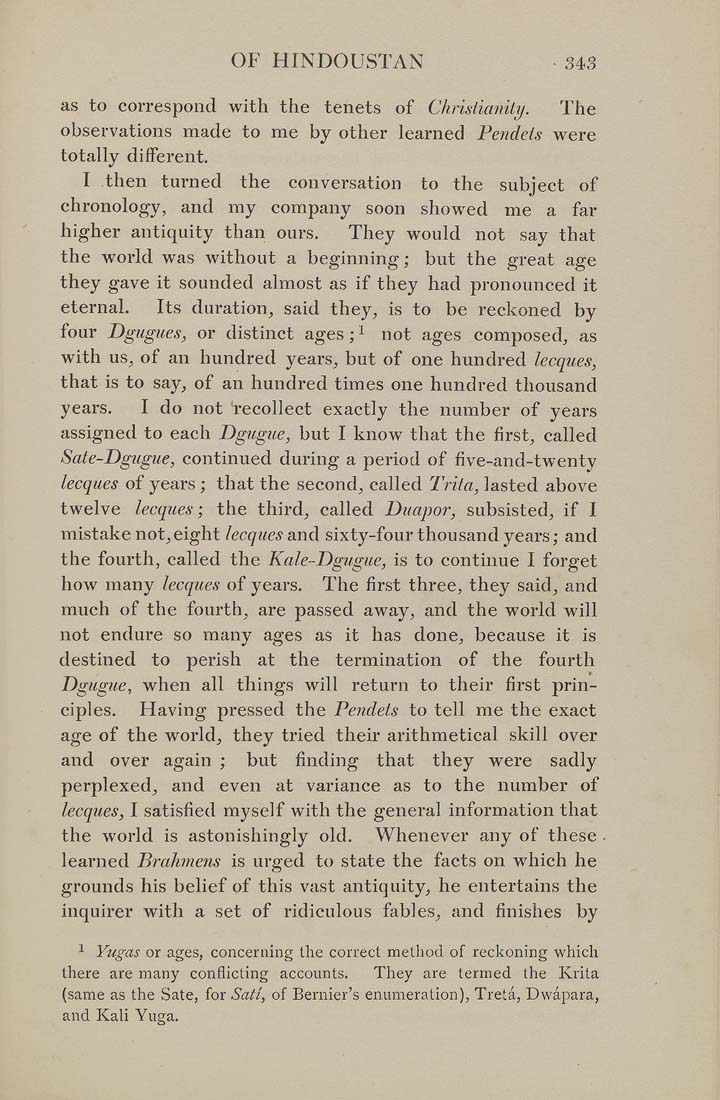OF HINDOUSTAN 343
as to correspond with the tenets of Christianity. The
observations made to me by other learned Pendets were
totally different.
I then turned the conversation to the subject of
chronology, and my company soon showed me a far
higher antiquity than ours. They would not say that
the world was without a beginning; but the great age
they gave it sounded almost as if they had pronounced it
eternal. Its duration, said they, is to be reckoned by
four Dgugues, or distinct ages;! not ages composed, as
with us, of an hundred years, but of one hundred lecques,
that is to say, of an hundred times one hundred thousand
years. I do not recollect exactly the number of years
assigned to each Dgugue, but I know that the first, called
Sate-Dgugue, continued during a period of five-and-twenty
lecques ot years; that the second, called Trita, lasted above
twelve lecques; the third, called Duapor, subsisted, if I
mistake not,eight/ec(^we,s and sixty-four thousand years; and
the fourth, called the Kale-Dgugue, is to continue I forget
how many lecques of years. The first three, they said, and
much of the fourth, are passed away, and the world will
not endure so many ages as it has done, because it is
destined to perish at the termination of the fourth
Dgugue, when all things will return to their first prin¬
ciples. Having pressed the Pendets to tell me the exact
age of the world, they tried their arithmetical skill over
and over again ; but finding that they were sadly
perplexed, and even at variance as to the number of
lecques, I satisfied myself with the general information that
the world is astonishingly old. Whenever any of these •
learned Brahmens is urged to state the facts on which he
grounds his belief of this vast antiquity, he entertains the
inquirer with a set of ridiculous fables, and finishes by
! Yugas or ages, concerning the correct method of reckoning which
there are many conflicting accounts. They are termed the Krita
(same as the Sate, for Sati, of Bernier's enumeration), Treta, Dwapara,
and Kali Yuga.
|








